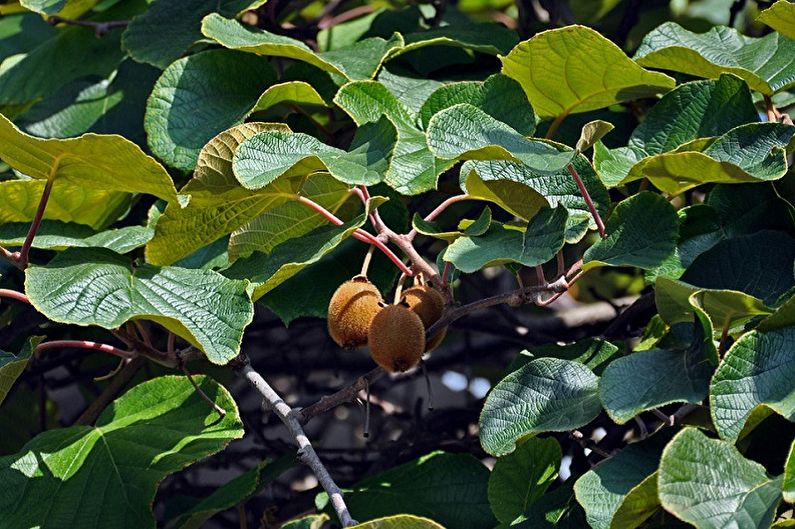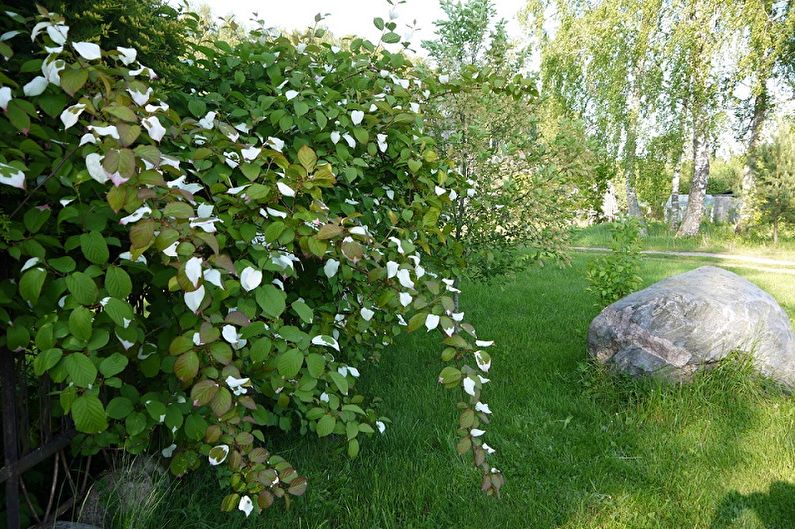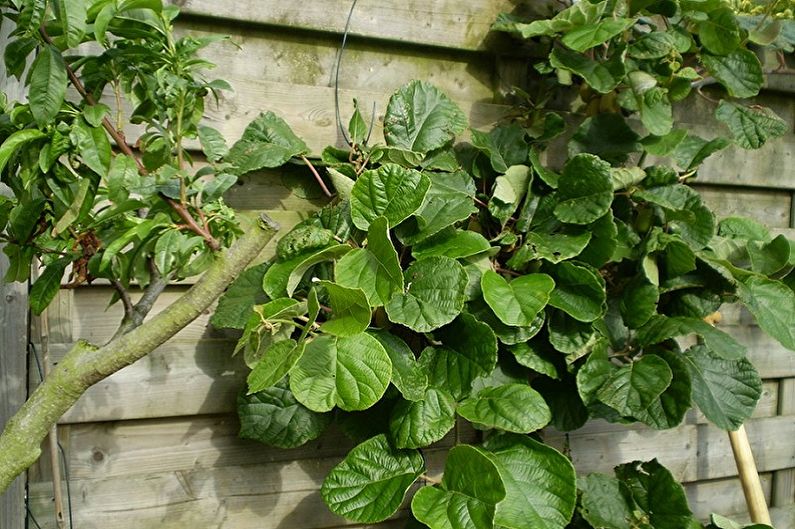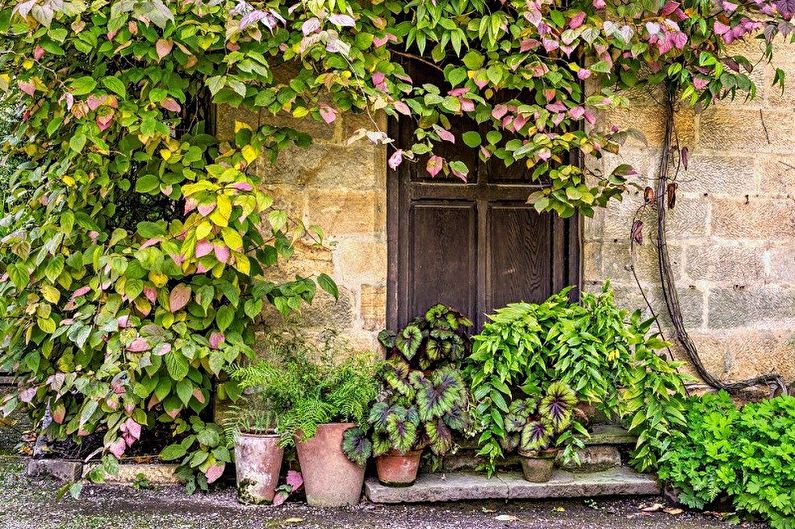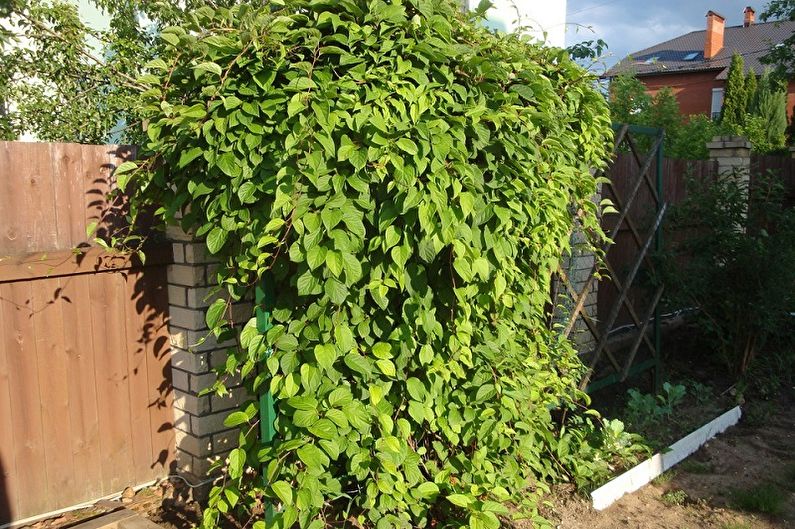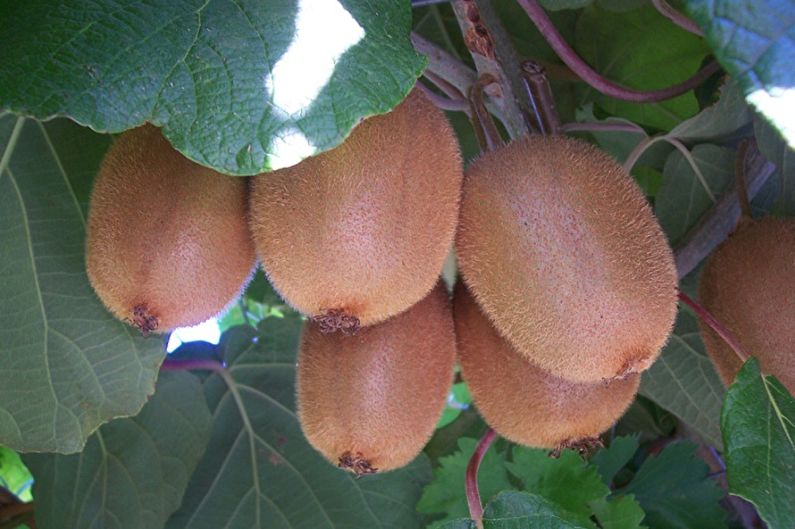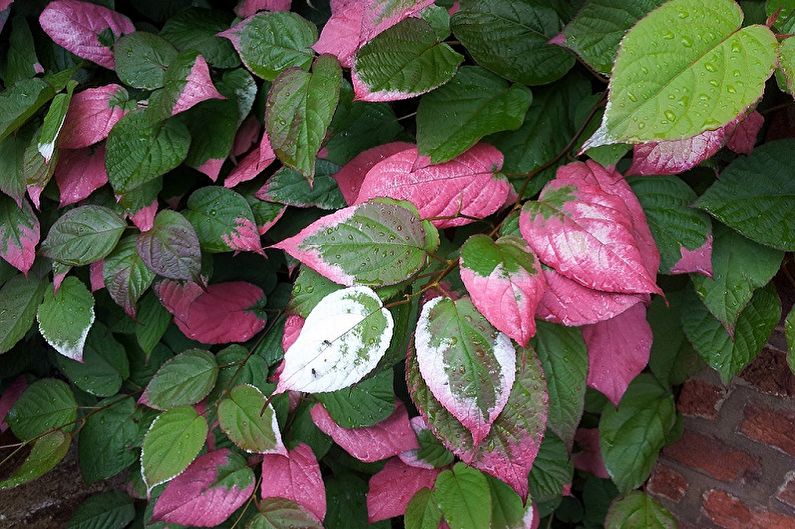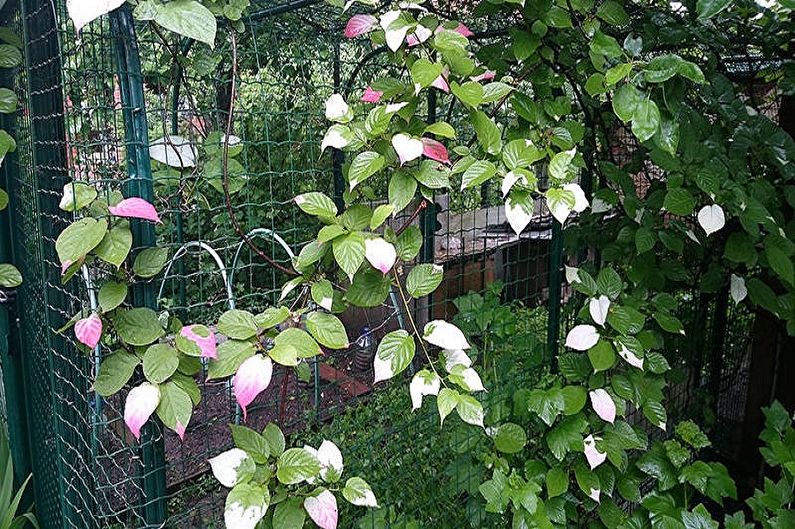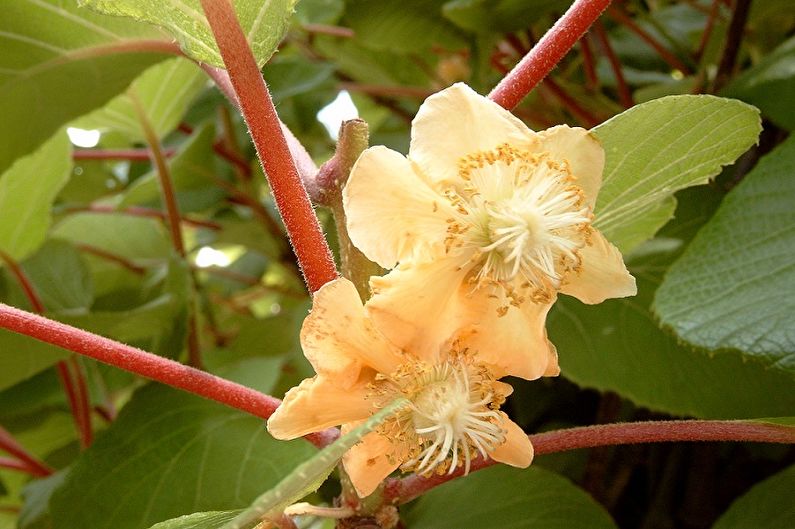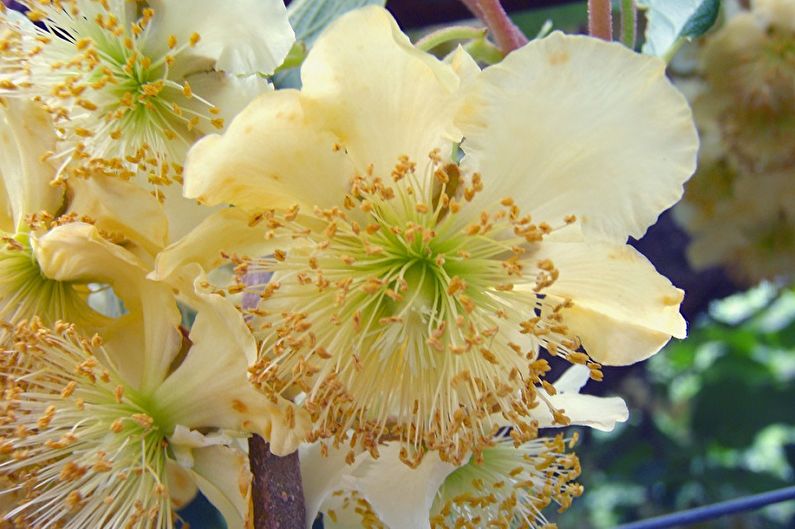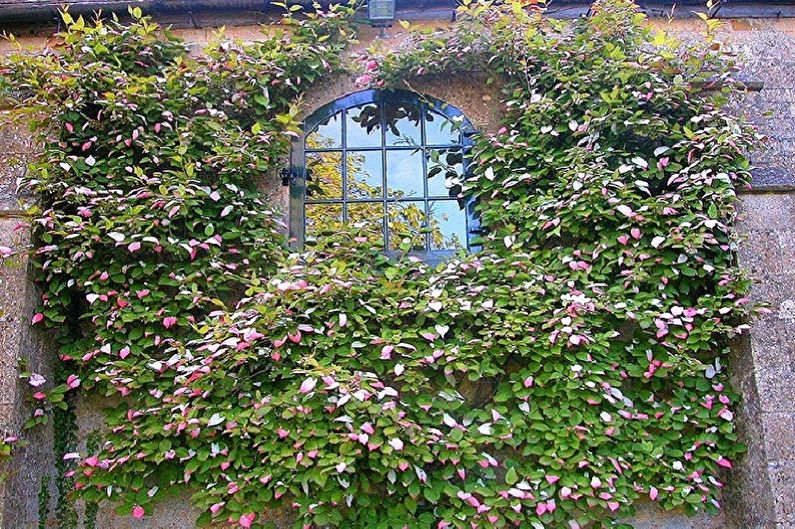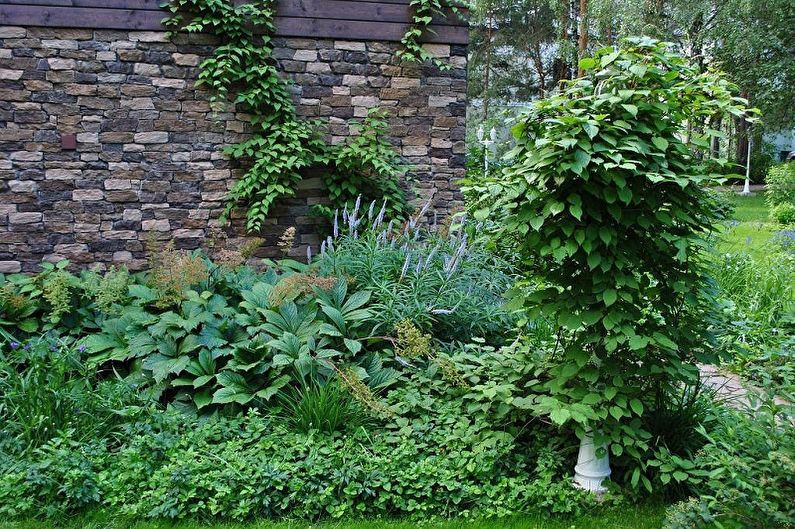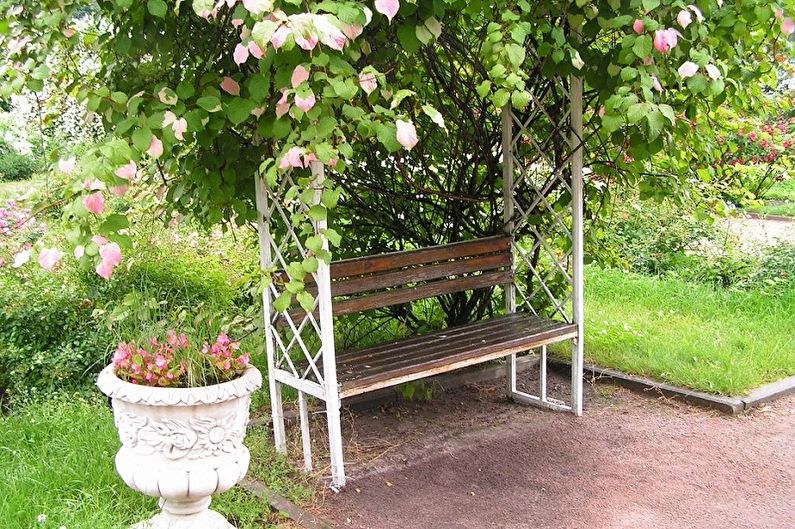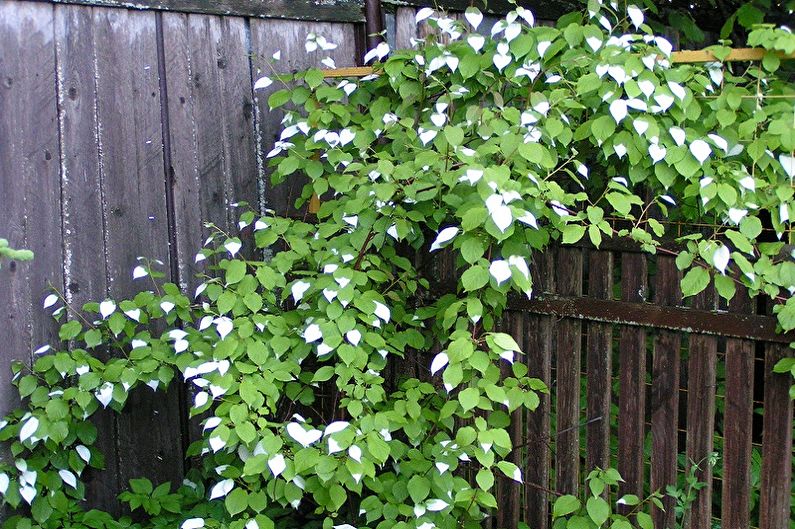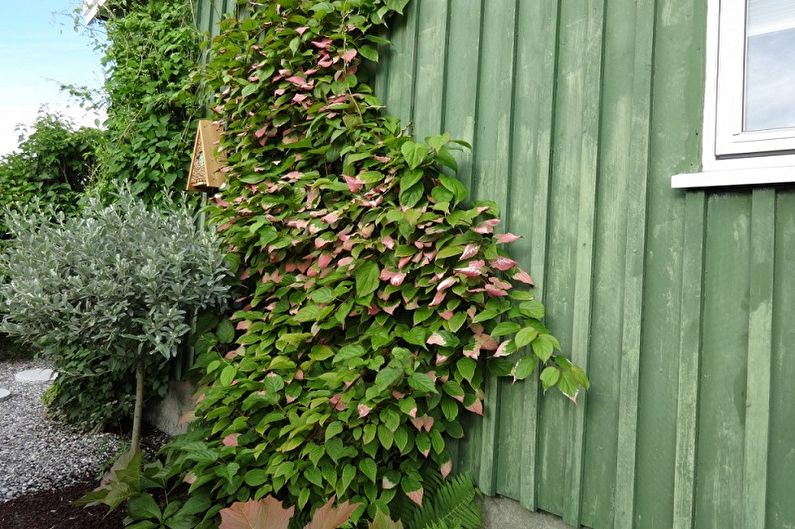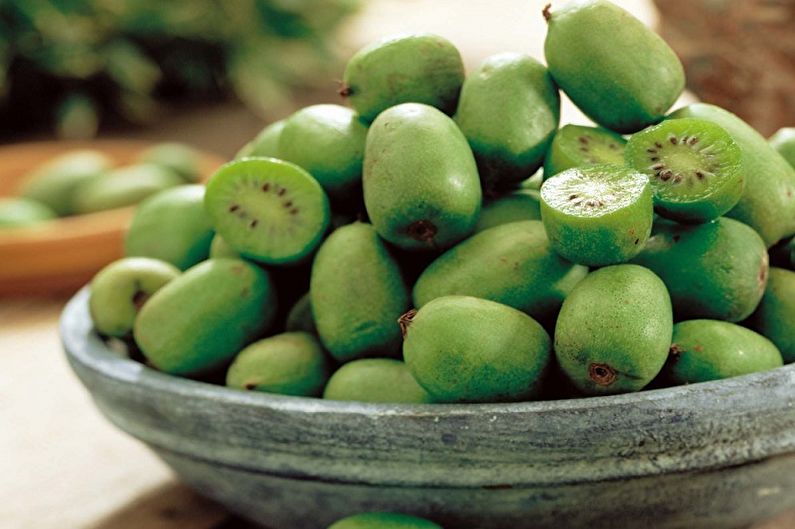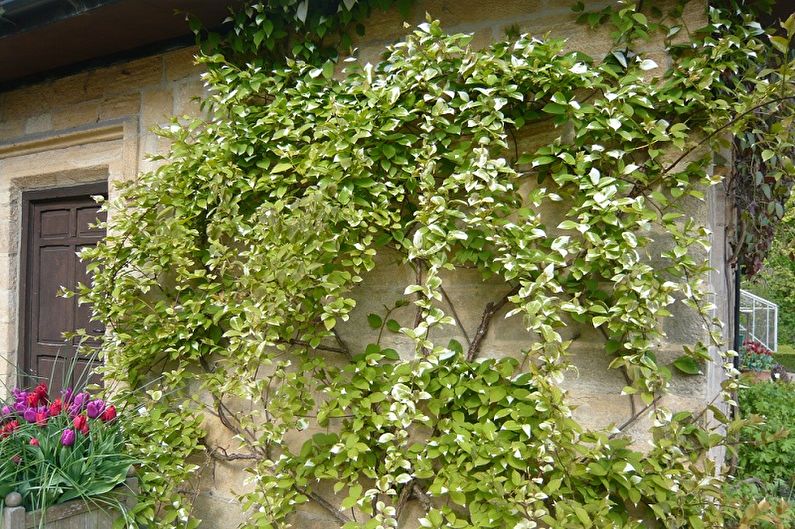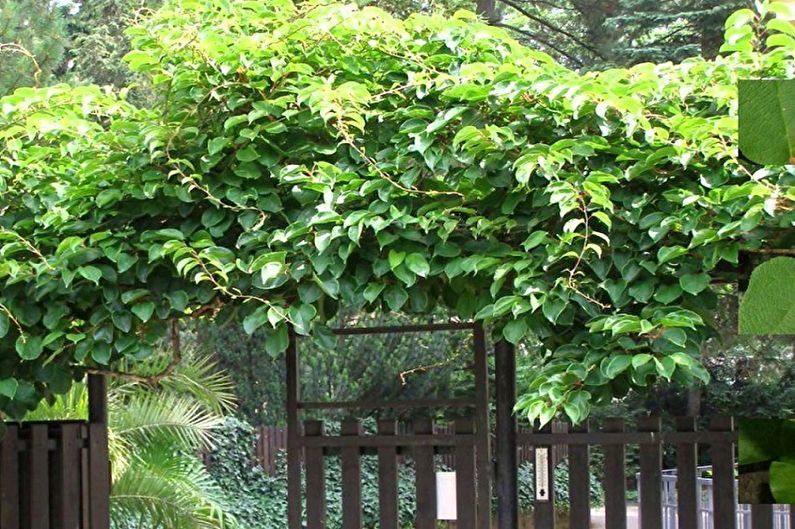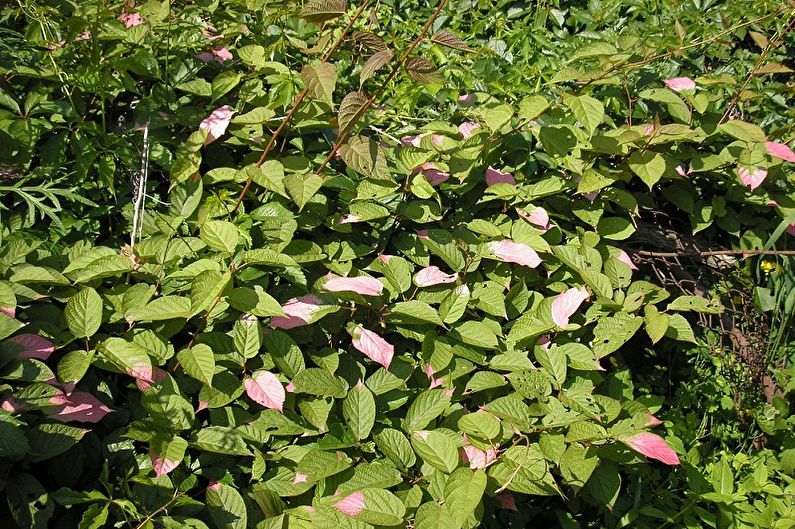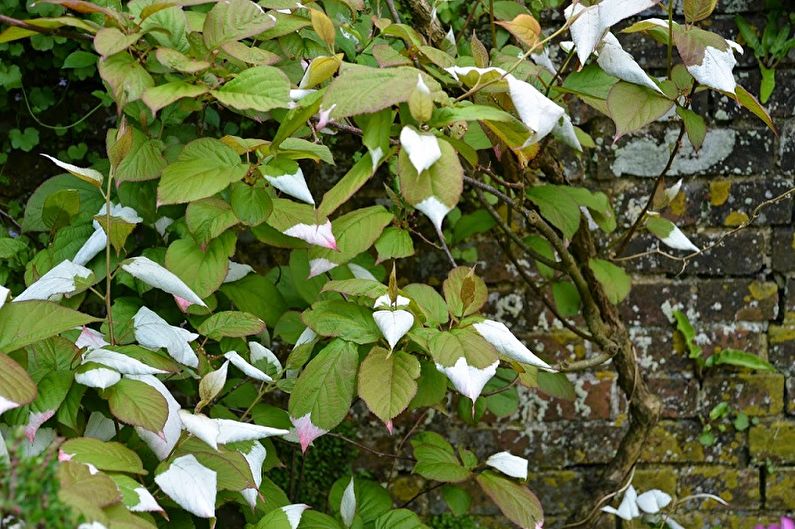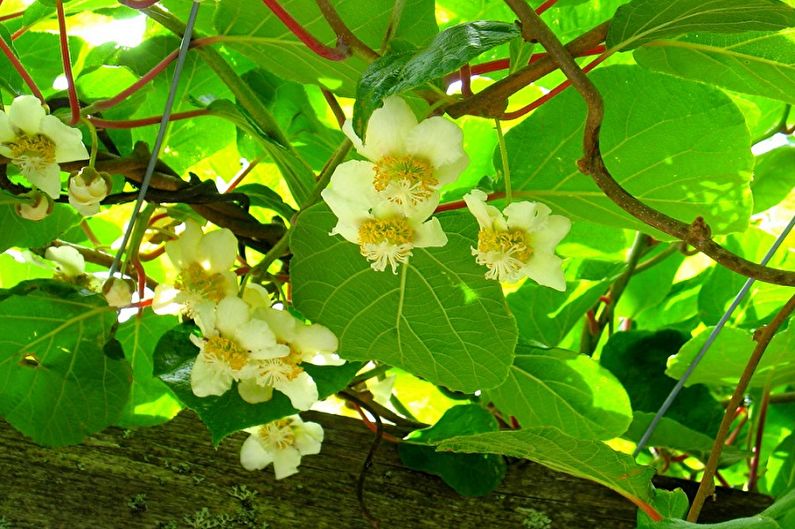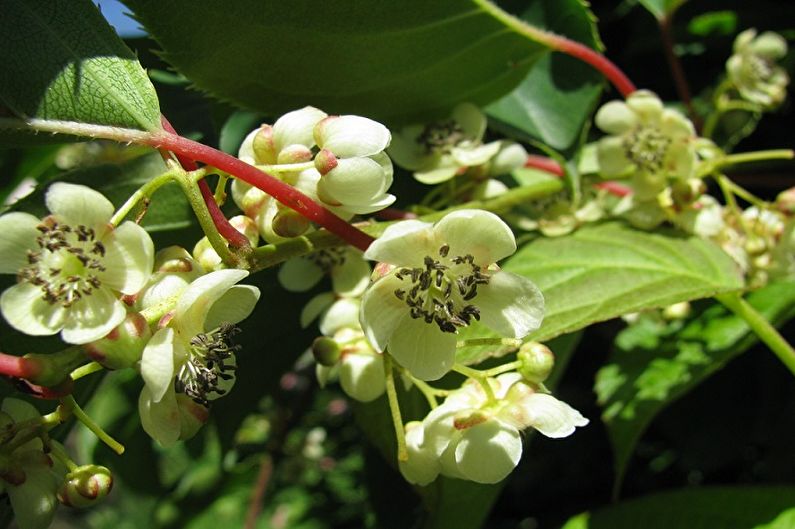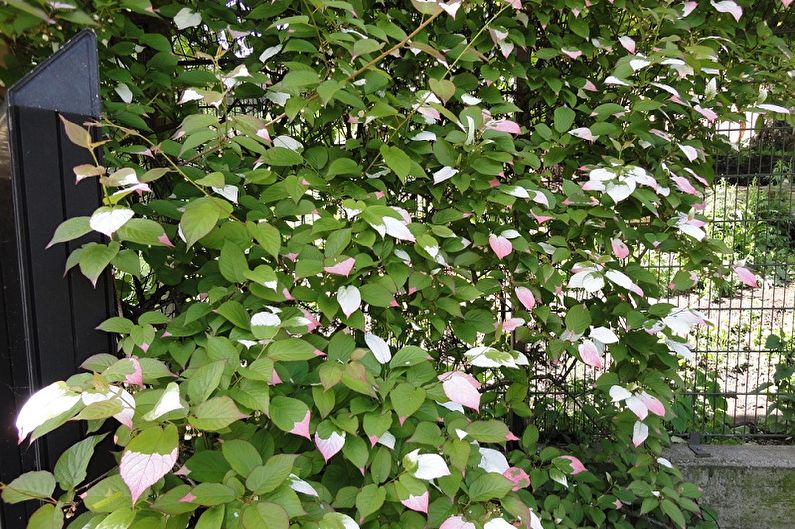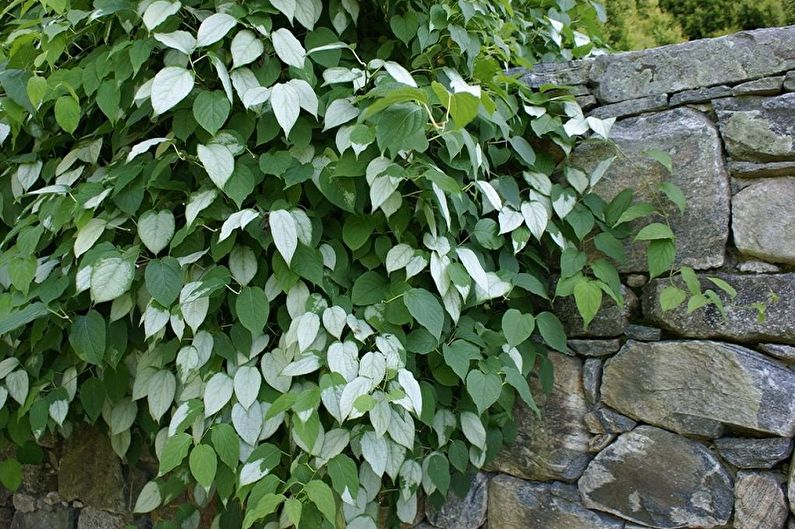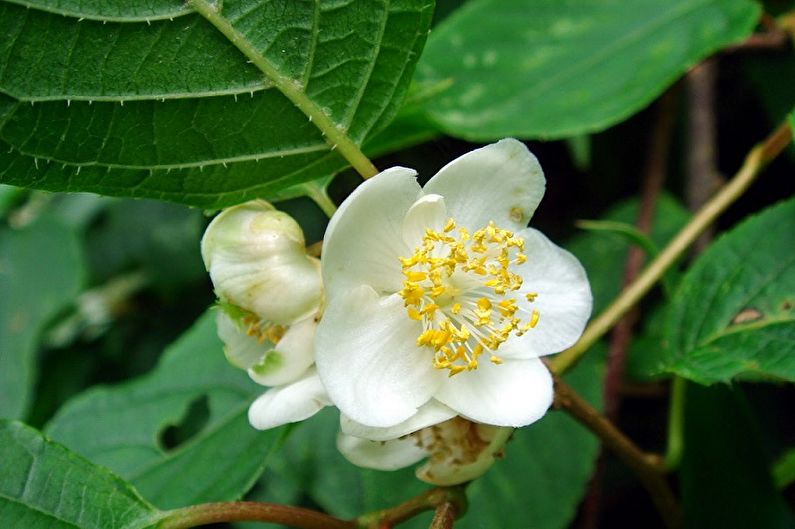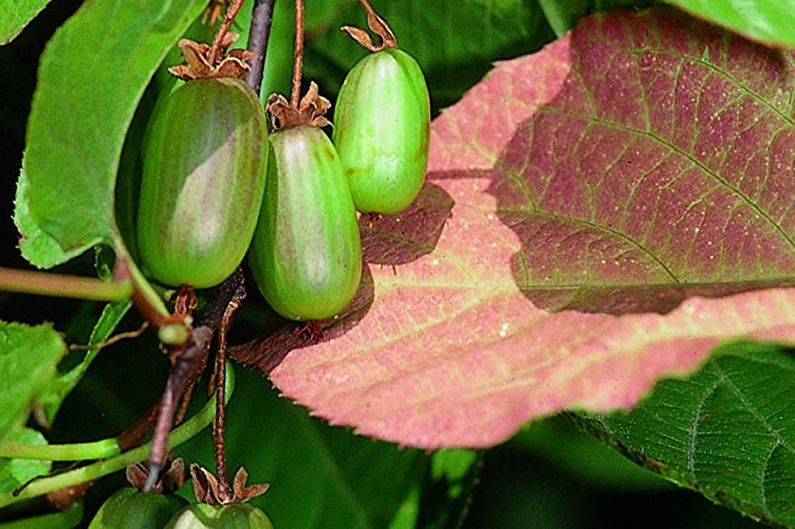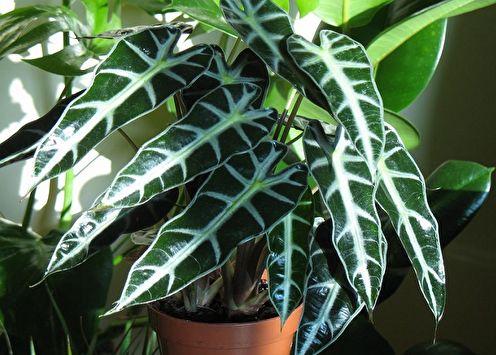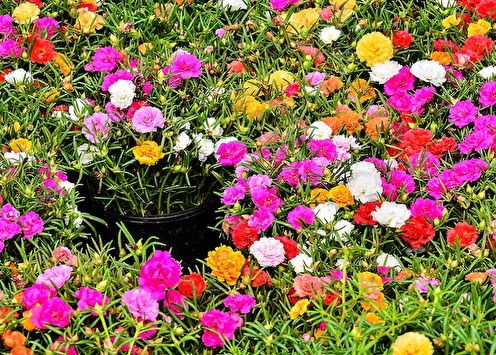
Actinidia is not only a beautiful decorative vine, but also a useful garden plant. It abundantly bears fruit, pleases with flowering and beautiful leaves, suitable for creating fancy hedges or arches, hiding household objects, decorating terraces, arbors and facades. Actinidia is a relative of kiwi. This is directly indicated by its fruits, greenish oblong berries up to 3 cm. Moreover: initially, it was precisely one of the varieties of actinidia that became its progenitor.
General characteristics
Actinidia in vivo grows in tropical regions, as well as in the subtropics and temperate latitudes of East Asia. But decorative varieties bred by breeders can be grown almost everywhere.
This is a large curly vine in its classic manifestation. It pleases with decorative leaves and healthy fruits with a record vitamin C content, even higher than that of lemons. In addition, different varieties differ in taste, smell and size.
Tall shoots gradually turn woody. The leaves are simple, with slightly jagged edges and a sharp end. On the stems, they grow alternately. In the sinuses, small flowers hide, up to a maximum of 3 cm. Most often they are white or yellow.
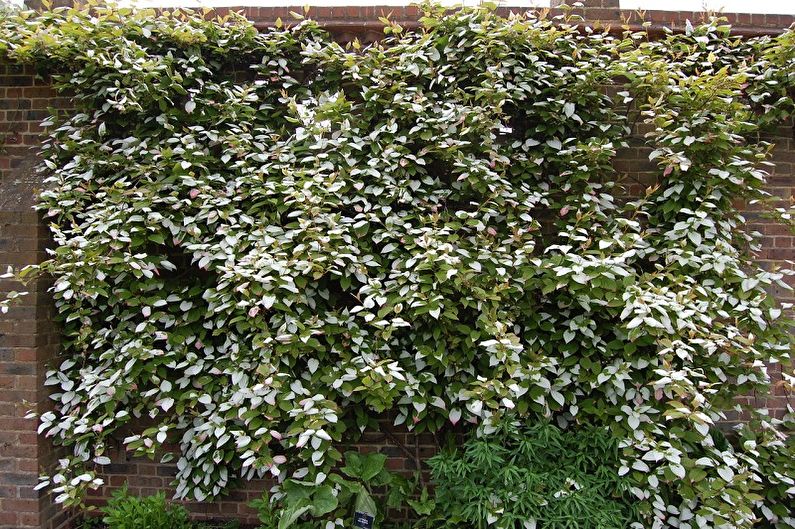
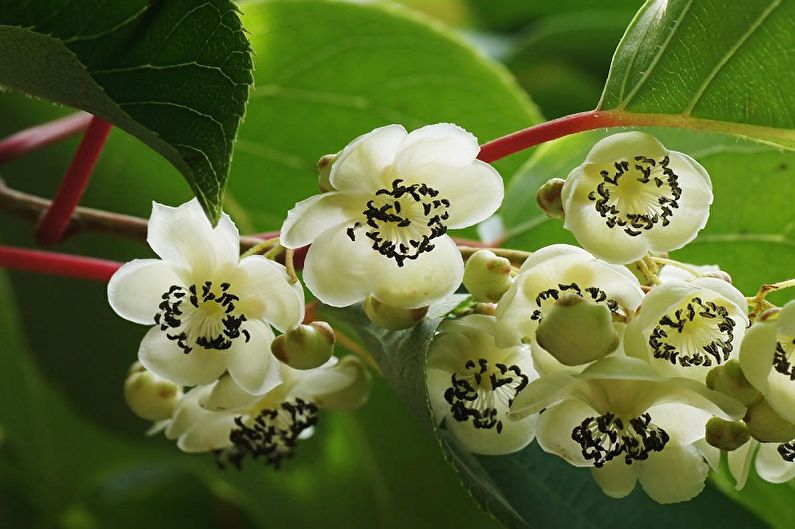

Types of Actinidia
In the world there are more than 70 types of actinidia. Most of them are perennial creepers native to Southeast Asia. This is a dioecious plant, so that all individuals are divided into male and female. It is difficult for beginners to distinguish between them. This is clearly manifested only during the flowering period. Female flowers are solitary, with a massive upper ovary and short sparse stamens. Male - collected in half-guards for three. In the middle - a subtle reduced ovary surrounded by numerous stamens. Self-fertile forms are single and are found in only a few varieties.
Acute actinidia
This is the most powerful and largest variety, native to the eastern forests. It grows to 30 cm, and the trunk at the rhizome expands to 20 cm.
Large and strong shoots encircle nearby trees and grab their trunks. If there is no support, they branch. It is because of such vines that the real dense jungle appears. The leaf is dense, decorative, shiny. Sweet soft fruits ripen in the fall. They are also relatively large, up to 3 cm.
Famous varieties - Goliath, Seaside, Balsam, September, Giantess and others.
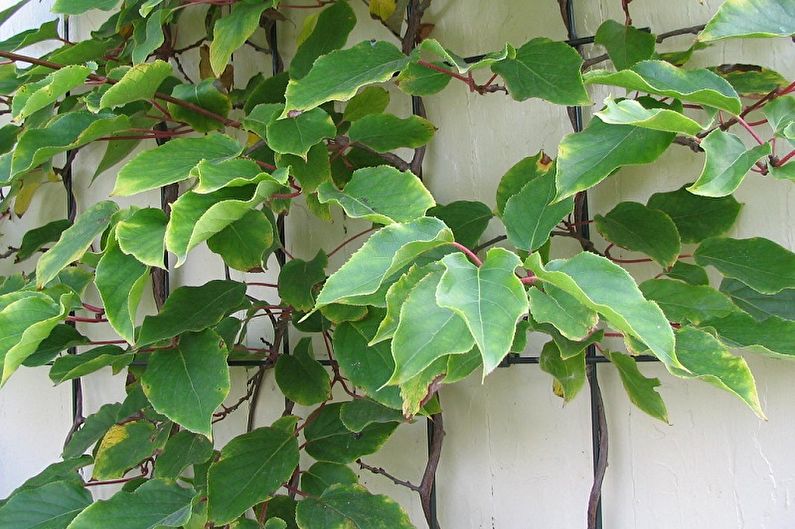
Actinidia colomictus
This is the most famous, widespread and diverse variety native to the Far East. In nature, it grows on hilly slopes and in forests, and reaches a height of 7 m.
A feature of actinidia is the ability of its foliage to change its color. Young leaves - an unusual bronze hue, but over time they darken and turn green, and with the approach of the flowering period turn white. After it, after about 20 days, the tips turn pink or even become saturated raspberry color. It was due to this that the actinidia colomict became a popular ornamental plant.
In the fall, creeper leaves turn yellow, turn pink or turn purple. Due to the fact that this variety is resistant to winter, you can enjoy the shoots all year round.
Among the known subspecies are the early harvested Grape Actinidia, the late and large Slastena, as well as Parkovaya, Wafelnaya, Gourmand and Coin.
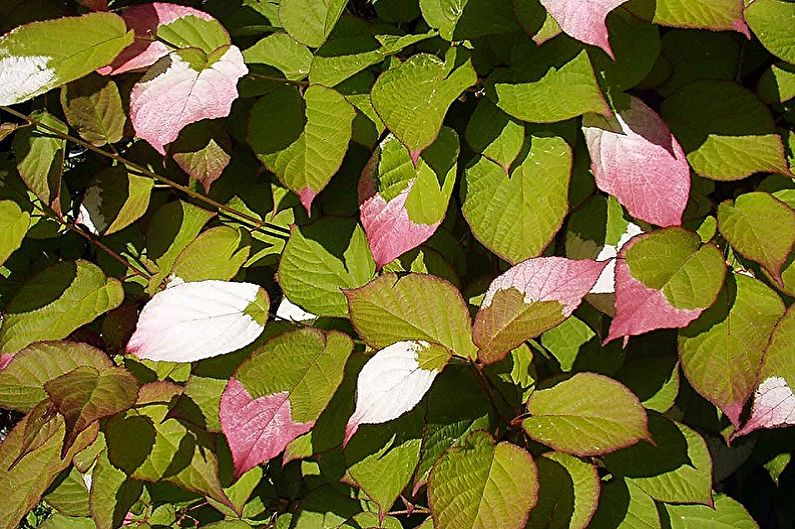
Actinidia polygamous
Acute polygamous actinidia is slightly different from other varieties. Its shoots are relatively small, up to 5 m. They almost do not branch. But the leaves fully demonstrate the variability of color during development.
Unripe fruits are sharp in taste, but become sweeter over time. An interesting feature is the orange color of the berries, due to which such actinidia is especially decorative.
Famous varieties are large and productive Apricot and unpretentious and frost-resistant Beauty.Perchik, Spindle and Beta are also common.

Actinidia Giralda
This is another large variety native to the south of Primorsky Krai. Shoots quickly and easily reach 25 m. The fruits of such an actinidia are the largest, up to 4 cm. They are distinguished by a dense and rough skin.
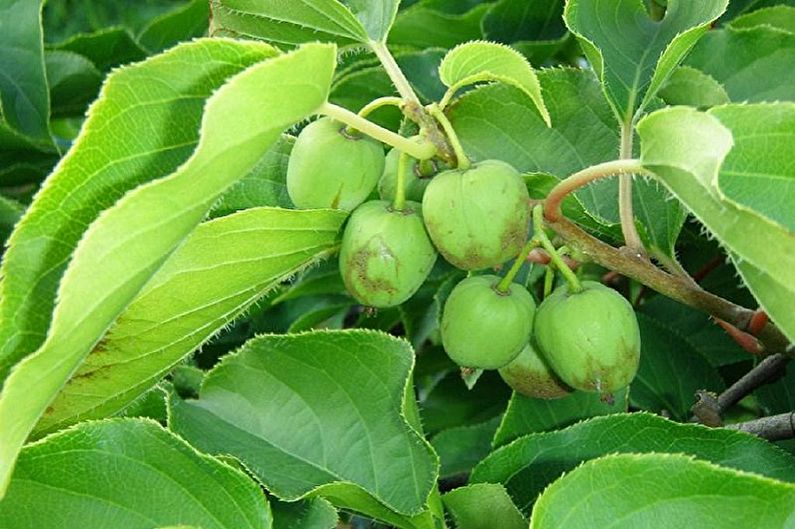
Actinidia purpurea
This is a large and thermophilic Chinese liana with dark red sweet berries. Sometimes the fruits acquire a purple hue. Leaves are smooth, large and heart-shaped. This variety is difficult to tolerate frost and winter.
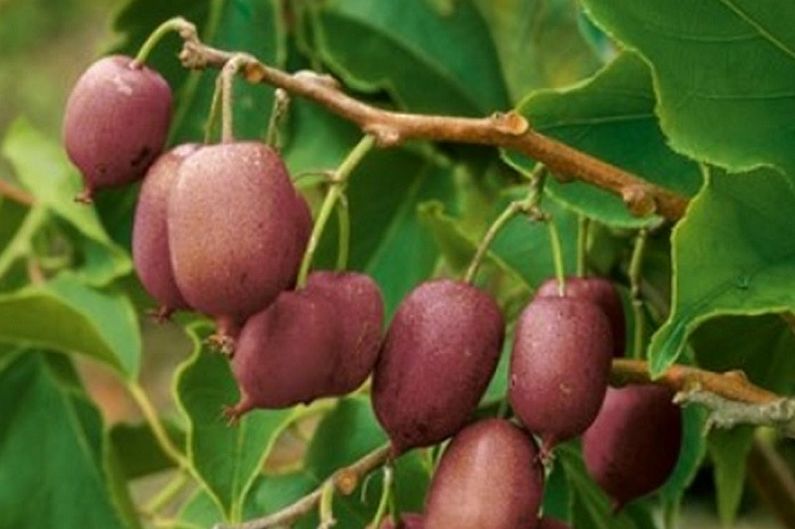
Actinidia chinese
As the name implies, the homeland of this variety is China. The medium-sized liana reaches 7–8 m. Its leaves are large and leathery, wide, up to 12 cm. An interesting feature is the fringe and the reddish bark of the shoots. Large fruits, about 5 cm, are covered with a light fluff. It was from this actinidia that breeders took kiwi at one time.
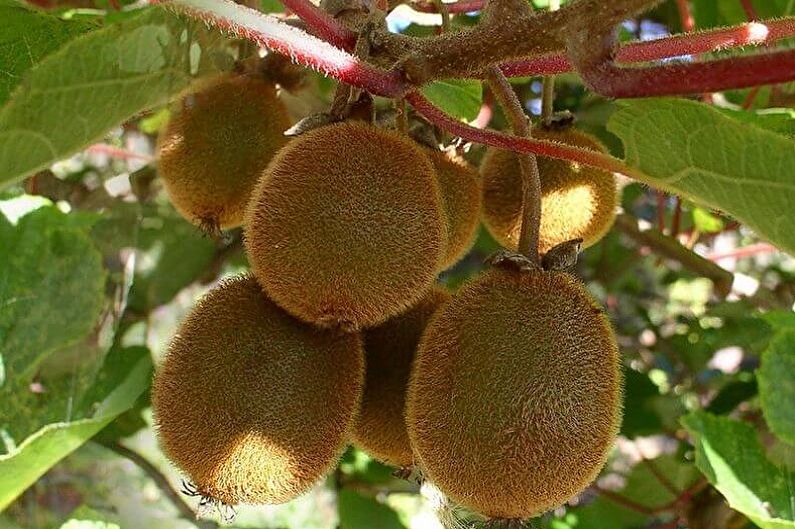
Actinidia Care
Actinidia is unpretentious. The main rule is to maintain a suitable humidity. To do this, it is useful not only to regularly water the soil, but also to mulch it with peat or sawdust.
In the fall, dig, loosen and fertilize. Keep in mind that the roots of vines lie in the surface layer of the soil, so you need to do everything as carefully as possible.
Growing actinidia necessarily requires support. To do this, a trellis is built above 2-3 m. To form a plant, leave some of the strongest shoots, tie them to the trellis and cut the rest. In the future, every year, remove one of the old vines, replacing it with a new one. The first fruits will appear in a few years. Then the replacement procedure can be shortened and repeated once every 3-4 years.

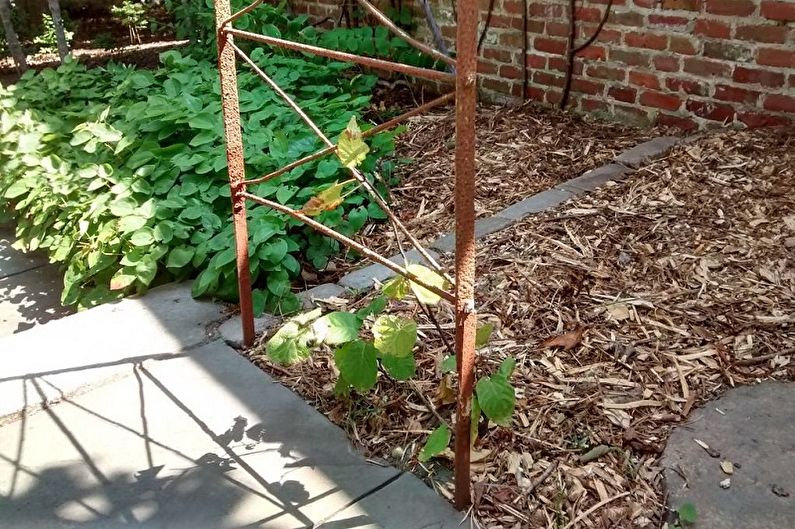
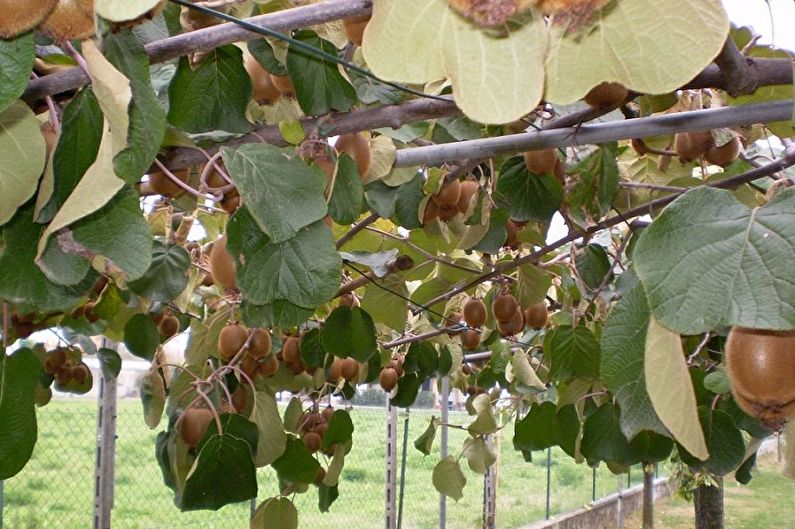
Transplantation and reproduction
Actinidia can be grown from seeds or propagated by traditional vegetative methods: root division, cuttings, layering or grafting. The simplest and most practical option is layering. At the end of spring, a strong and healthy shoot is horizontally stacked and fixed in the groove. There, for some time he is actively watered and covered with soil until a rhizome appears. After a year, you can plant it yourself or send it to seedlings for growing.
To grow actinidia, it is important to choose the right place. It is planted on the verandas or terraces. If there is no support, it can be built separately. Seedlings are planted in early spring. Pebble drainage is laid in the pit. Do not forget to make fertilizers: humus, ash, superphosphates. Be sure to avoid lime in the soil - tropical plants can not tolerate it.
The optimal distance is from 2 m, so that nothing prevents the actinidia from growing. The soil should be loose and moderately moist. To maintain an optimal microclimate, it is mulched. For natural pollination, a male and a pair of female individuals are planted nearby.

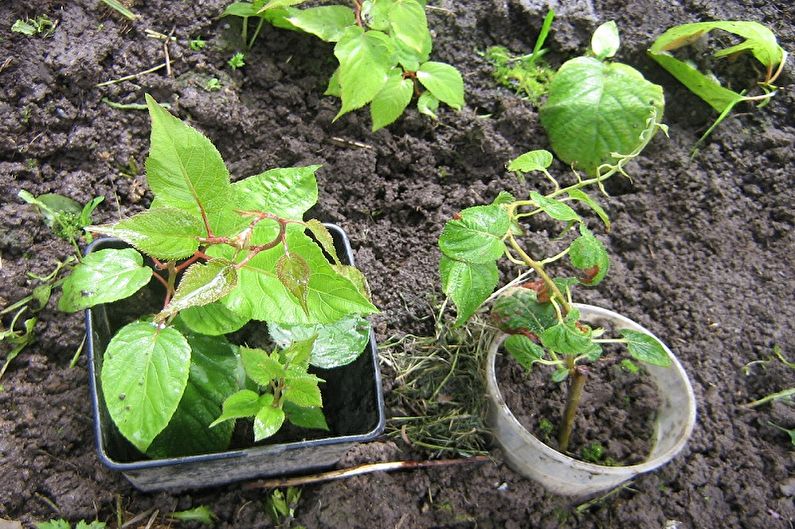
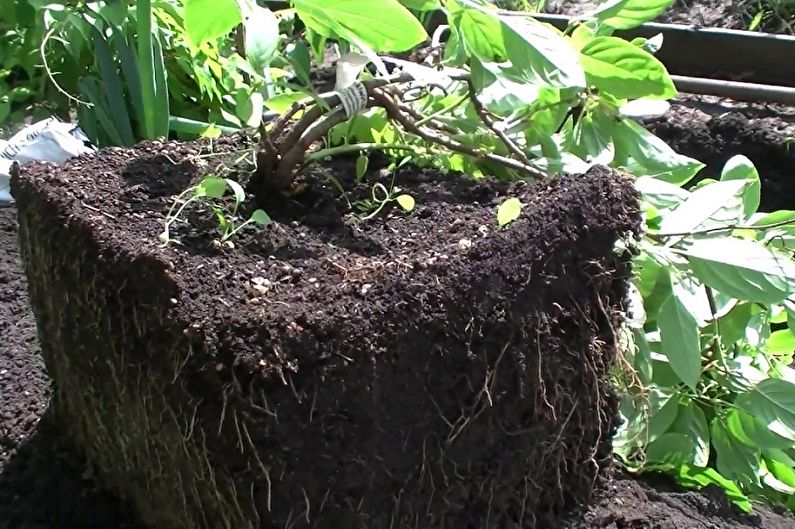

Pest and Disease Control
Actinidia is resistant to diseases and pests. The most dangerous enemy is a fungal infection. To do this, maintain favorable humidity, always remove damaged areas and regularly treat seedlings with special tools.
The main pest of vines is the leaf beetle. They damage the kidneys and the flesh of the leaves, and in addition - quickly and actively multiply. To prevent the invasion, treat the seedlings with Bordeaux fluid every spring.

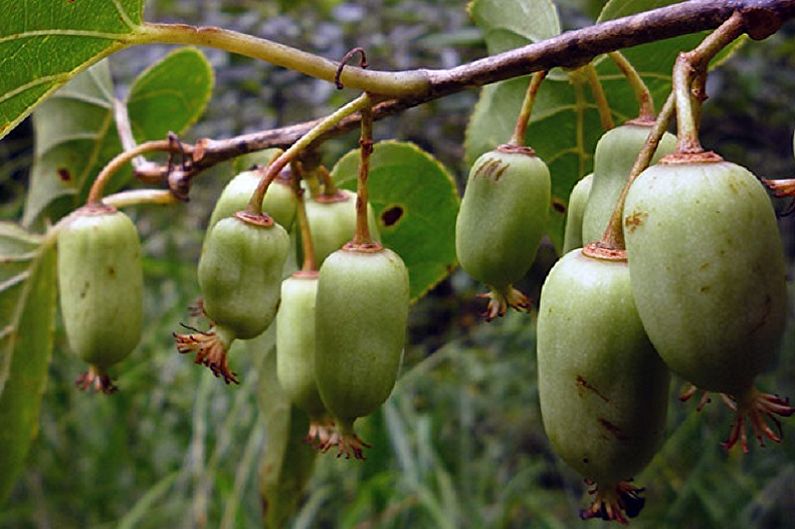
Actinidia - photo
Check out our selection of photographs to understand what actinidia looks like, where to drop it, and what it combines with. We have collected the most vivid and interesting examples for the design of your seedlings. Enjoy watching!

